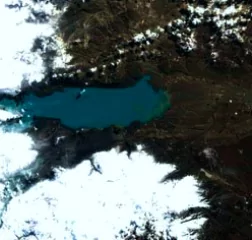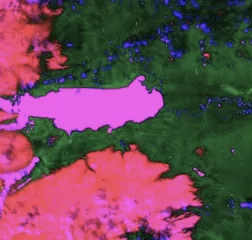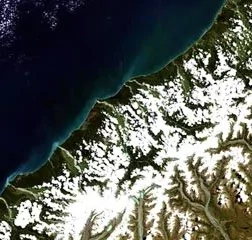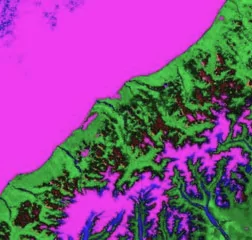Index Stack (NDVI, NDWI, NDSI)
These spectral indices are used to automatically outline landscape features like snow/ice, clouds, vegetation and water in Landsat imagery, where they create an ‘index stack’ using the three indices sets.
Usually, a Landsat 8 image is used to generate output layers for the Normalized Difference Water Index (NDWI), Normalized Difference Vegetation Index (NDVI), and Normalized Difference Snow Index (NDSI). Where these output layers are stacked into the image displaying the result ‘index stack’ as an RGB image Difference Vegetation Index (NDVI) can be used to outline the presence of vegetation. Since the Landsat 8 quality valuation band does not include vegetation output, NDVI appears to be a logical foundation to perform the assessment. It is used to indicate relative density, or the amount, of the green vegetation present in the image. It can also be used to adapt this index to show the confidence levels with respect to the presence of vegetation.
This index uses reflectance from a red band around 0.66 μm and a near-Infrared band around 0.86 μm. The red band is found in the absorption region of the chlorophyll, while the near-IR band is used in high reflectance plateau of the vegetation canopies. These two bands sense different depths over the vegetation canopies.
Normalized Difference Water Index (NDWI), is used to differentiate water from the dry land or rather most suitable for water body mapping. Water bodies have a low radiation and strong absorbability in the visible infrared wavelengths range. NDWI uses near Infra-red and green bands of remote sensing images based on the occurrence. It can boost the water information efficiently in most of the cases. It’s subtle in land built-up and often ends up in overestimated water bodies.
Normalized Difference Snow Index (NDSI) is used to delineate the presence of snow/ice. It is a standardized ratio of the difference in the reflectance in the bands that take advantage of unique signature and the spectral difference to indicate snow from the surrounding features and even clouds.
Why Use An Index Stack?
Each index works together to be readily apparent in an image stack where particular colors are equated to different landscape features. Where clouds appear as a mixture of purple and magenta, water as purple, vegetation as green, and soil, rocks, and barren land as blue and snow/ice as magenta.
This index stack not only offers rapid picturing of multiple landscape features but also shows the arithmetical foundation for the quantitative analysis and classification of the image using index values. Bearing in mind different indices available, the potentials for modifying and expanding this type of analysis are virtually limitless.





